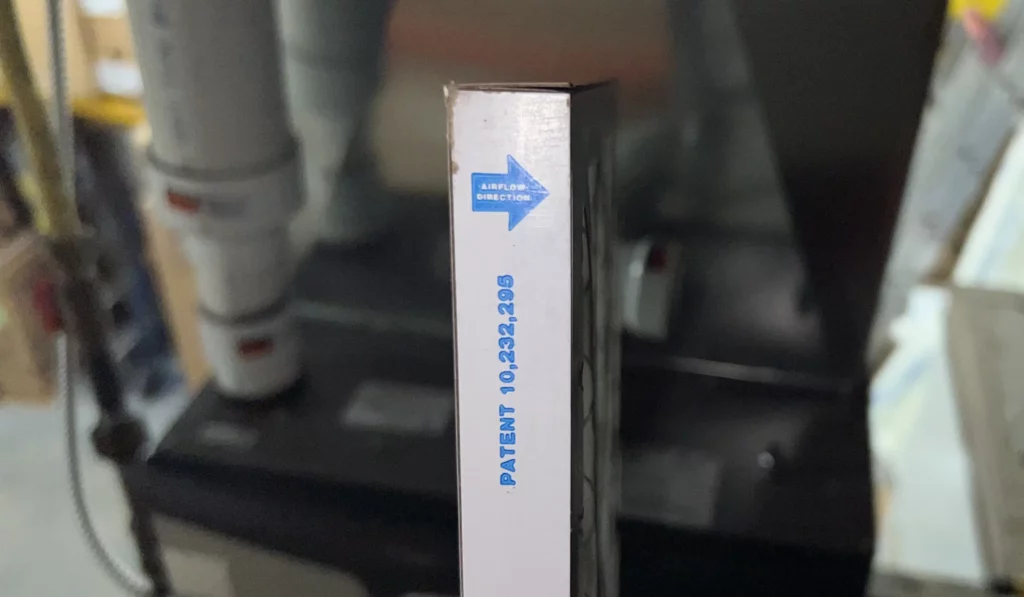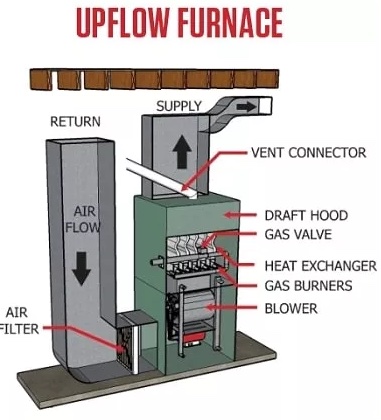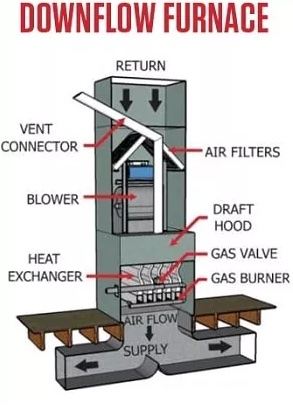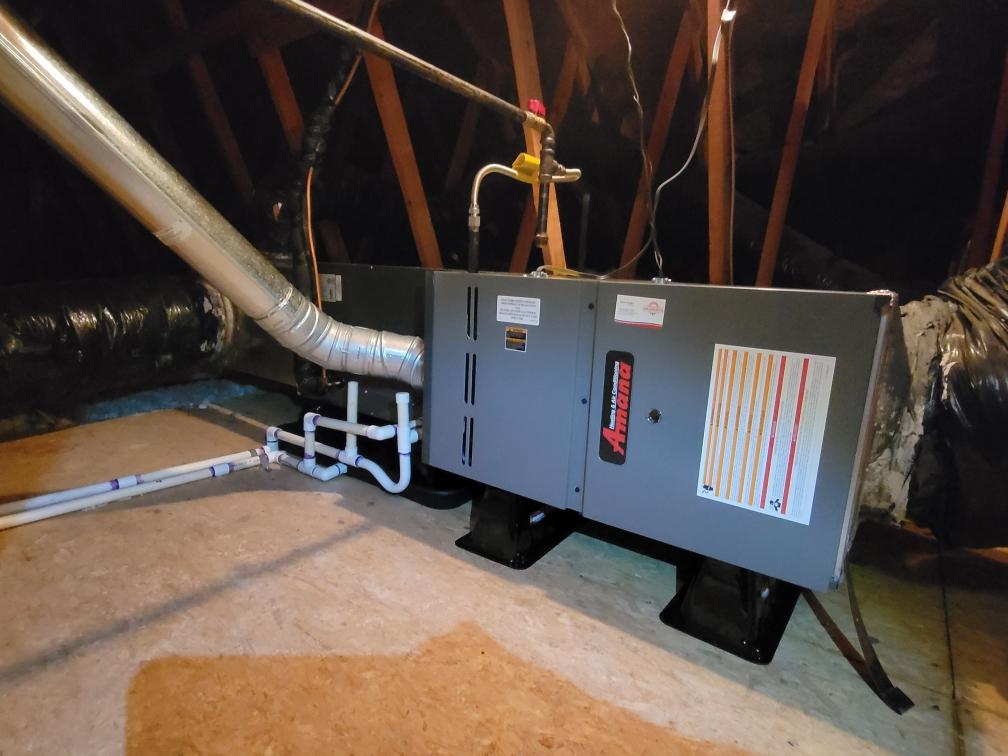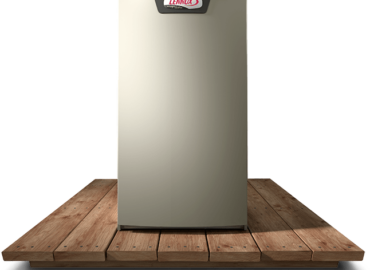How to Install a Furnace Filter Correctly?
The answer is here: The furnace filter should be installed with the arrow pointing toward the direction of the airflow of the furnace. In simple words, the direction of flow should be the same as the airflow throughout your unit.
As a novice, altering or replacing an HVAC furnace filter at home can be daunting for homeowners. After all, there are two ways to install them: right and wrong. Many of you may not be aware of these methods. Therefore, learning how to install furnace filters in the right direction is important to ensure that the HVAC system operates at its best efficiency.
Installing filters in an inappropriate direction could adversely affect the furnace’s efficiency and performance while costing you money constantly. This information lets you know useful furnace filter tips, including the direction of the furnace filter, which is the right HVAC furnace filter, and other relevant information.
Therefore, learning how to install furnace filters in the right direction is important so that the HVAC system runs at its best efficiency.
By regular inspection, you can prevent air filters from getting clogged with dust, dirt, debris, and pet hairs. The best advice is to replace your HVAC filter at least every 3 months so that you and your family can continue to benefit from filtered air. This number could be lower depending on how many pets and occupants your property has. Therefore, the more often air filters are changed, the better energy efficiency and better indoor air quality you’ll get. To retain the efficiency of your HVAC, you’ll need to make sure the location for installation you choose is the right one.
Correct Orientation for Different Filters
When installing furnace filters, it is important to ensure they work effectively. The correct orientation for a furnace filter depends on the type of filter you have.
1. Disposable Fiberglass or Pleated Filters
These are the most common types of furnace filters. They typically have a cardboard frame and are made of fiberglass or pleated fabric. The airflow direction usually matters for these filters. Look for arrows or markings on the filter frame; these arrows indicate the direction of airflow. You should install the filter with the arrow pointing in the direction of the airflow, which is usually toward the furnace or air handler. In most cases, this means the arrow should point toward the blower motor.
2. Washable or Reusable Filters
If you have a washable or reusable filter made of materials like aluminum or foam, they often don’t have specific airflow direction markings. In this case, you can install them either way, but it’s a good practice to install them in the same orientation as the old filter if you’re replacing one.
3. Electrostatic Filters
Electrostatic filters may have specific installation instructions provided by the manufacturer. Follow their guidelines, which could include an airflow direction indicator.
4. HEPA Filters
High-efficiency particulate air (HEPA) filters are very effective, but they can be restrictive to airflow. They often have a specified airflow direction to ensure they function correctly. Check for manufacturer instructions, and if there are no arrows, the air typically flows through the side with the metal or wire mesh.
Always refer to the manufacturer’s instructions if you’re unsure about the correct installation for your specific filter. Installing the filter in the wrong direction can reduce its effectiveness and strain your HVAC system, so it’s important to get it right. Regularly changing or cleaning your filter as recommended by the manufacturer is also essential for maintaining good indoor air quality and the efficiency of your heating and cooling system.
Tips to find the right furnace filter/air handler direction
It’s worth remembering the simple saying, “Just go with the flow.” Make sure that the arrow on the filter points in the direction of air movement. Following this general rule ensures adequate filtration while maintaining uninterrupted airflow through your furnace unit.
- Check the direction arrows printed on the side of your furnace filter frame to make sure you’re locating the filter in the right place.
- Rotate the filter until you get an arrow.
- Next, turn on the blower, not in the furnace, by removing the filter, selecting the fan option on the thermostat, and keeping it in the on position.
Once the blower turns on, you should be able to put a few fingers, your hand, or even a piece of paper to determine where the filter moves.
Still unclear about what should be the air filter direction! Take a look at the below information. In the upcoming section, you’ll learn which direction the furnace filter runs in each type of HVAC system.
Furnace filter direction tips for different furnace types
Three types of furnaces are typically available in the Canadian market. Depending on the furnace type, the accurate location for the filter varies. But in most cases, the furnace filter is usually installed and positioned near the intake air blower fan to let air flows via the filter.
1. Upflow Furnace
An upright position is the most suitable location for most upflow furnaces. Placing them this way forces air from the bottom or side of the unit, then into the heat exchanger, and then it is forced upward into your building’s ductwork. Upflow furnaces are units placed in basements. In an up-flow furnace, the filter should be located in the blower chamber near the bottom of the unit, right next to the cold air return. With this furnace, the filter arrow should be placed facing upward.
2. Downflow furnace
With downflow furnaces, the air is taken in at the top, then heated inside, and then it’s taken out into your ductwork. Since it has downward-flowing air, make sure the filter is positioned at the top of the blower’s upper chamber. Downflow or attic furnace arrows should point down. In some downflow furnaces, a V-shaped filter system is installed, which requires two filters to be installed at the same angle in the chamber.
3. Horizontal furnace
In a horizontal furnace, air comes in from one direction, then extracts heat from it to cool it, and throws the air into a vent in the opposite direction. These furnaces usually come with a slide-in filter located on the side that draws cool air. The arrow point should be in the direction the wind is blowing.
How to install a furnace air filter in the right direction?
How to Install a Furnace Air Filter in the Right Direction
Now that you have determined the correct direction for your furnace filter let’s go through the step-by-step process of installing it properly:
- Locate the Filter: Find the filter’s location, which is typically where the ductwork meets the furnace. It will be closest to the unit and may be adjacent to the furnace.
- Remove the Old Filter: Remove the old filter from the filter air box on top of the furnace. Discard the old filter appropriately.
- Identify the Airflow Direction: Examine the new filter for an arrow indicating the proper airflow direction. The arrow should face toward the furnace and away from the return duct that draws the air in need of heating or cooling. To help you remember the airflow direction, you can use a permanent marker to draw an arrow on the furnace or ductwork.
- Install the New Filter: Slide the new filter into the filter air box with the arrow pointing towards the furnace. Ensure that the filter fits securely and is properly aligned.
- Regularly Monitor and Replace Filters: To maintain optimal performance, regularly monitor your furnace filter and replace it according to the recommended schedule. Keep track of the date when changing the filter to help you determine the duration between each alteration.
Safety tip: If the filter is placed inappropriately or in the wrong direction, the unit won’t adequately filter the air, causing damage to the HVAC unit. Also, it will reduce airflow via the furnace, making it use more power and work harder.
Bottom line
Hopefully, you understand that the arrow pointing to the filter is always positioned in the direction that air flows through the unit. If you know that the arrow should point toward the furnace’s heating chamber, you don’t need to rethink which way the filter goes or which side to install the filter on.
Final Thoughts
Proper installation of your furnace filter is crucial for maintaining the efficiency and longevity of your HVAC system. By following the guidelines outlined in this guide, you can ensure that your furnace filter is installed in the correct direction. Regularly monitoring and replacing your filters will help maintain optimal indoor air quality, energy efficiency, and the overall performance of your HVAC system. Remember, when it comes to furnace filters, “just go with the flow” to enjoy clean and comfortable air in your home.
Additional Information
It is important to choose the right-sized filter for your furnace to ensure a proper fit and optimal performance.
Some filters may have a filter rating or MERV (Minimum Efficiency Reporting Value) rating, indicating their efficiency in capturing particles of different sizes. Higher MERV ratings correspond to better filtration but may reduce airflow if not compatible with your furnace.
Consider consulting an HVAC professional for expert advice on furnace filter selection and installation. They can provide personalized recommendations based on your specific HVAC system and indoor air quality needs.
FAQ
Which way do you put the air filter in a furnace?
Furnace filters should be installed with the airflow direction in mind. Look for arrows on the filter; these arrows indicate the direction of airflow. The arrow should typically point towards the furnace or air handler, showing where the air is pulled in.
How do I know which way my air filter goes?
To determine the correct orientation, look for arrows or markings on the filter frame. The arrow will indicate the direction of airflow. If there are no arrows, consider the materials and construction of the filter (air often flows through the side with metal or wire mesh).
In which direction does air flow?
Air flows into the furnace or air handler through the return duct. So, the arrow on the filter should point in the direction of the return duct, which is typically towards the furnace.
How do I know if my furnace filter is backward?
If the filter is installed backward, the arrow or markings on the filter will point in the opposite direction of the airflow. You might also notice reduced airflow and decreased filter efficiency.
What happens if the furnace filter is backward?
If the filter is installed backward, it won't be effective at trapping dust, allergens, and particles in the air. Additionally, it can reduce airflow, making your heating and cooling system work harder and consume more energy.
What if my air filter has no arrow?
If your filter lacks arrows or clear markings, consider the filter's materials and construction. Air typically flows through the side with metal or wire mesh. If you're unsure, consult the manufacturer's instructions.
Where does the filter go on a downflow furnace?
In a downflow furnace, the filter is typically located in the return air duct, often near the furnace or air handler. The arrow on the filter should still point in the direction of the return air duct.
What happens if the air filter is installed wrong?
If the air filter is installed incorrectly, it can lead to reduced air quality, decreased filter efficiency, and increased energy consumption. It's important to install the filter correctly to maintain good indoor air quality and keep your HVAC system running efficiently. Remember that following the manufacturer's instructions, when available, is always a good practice to ensure your furnace filter is installed correctly and functions effectively.

